

The Persistent Challenges of Armenia’s Tourism Sector

The global tourism industry is being revived as COVID-19 pandemic restrictions ease. After a three-year break, Armenia is ready to once again show off its hospitality and share its culture and landscapes with people from all over the world. Already in 2021, the country opened for tourism, lifting travel bans on its land borders with Georgia and Iran, as well as opening its airspace for international flights. In 2022, before the tourism season, the government abolished its pandemic-related restrictions. Sure enough, the number of tourists has exceeded the amount compared to the past two years. In the first quarter of 2022, over 240,000 [1] tourists visited Armenia––2.9 times more than in the same period last year [in 2019, before the pandemic and the 2020 Artsakh War, over 364,000 tourists had visited Armenia]. The cafes in Yerevan are buzzing with visitors and tourists can again be spotted in Yerevan and in tourist destinations outside the capital. Once again, the Armenian government is trying to find ways to develop tourism in Armenia and attract more tourists, despite the persistent infrastructure, economic, and security challenges.
The tourism industry is an important contributor to Armenia’s GDP. In 2019, the best year for tourism in Armenia to date, the industry comprised nearly 12 percent of Armenia’s GDP. The newly appointed head of Armenia’s Tourism Committee, Sisian Boghossian, is hopeful that Armenia will have recovered its tourism potential by 2024 .
The New Tourism Development Model
In May 2022, the Tourism Committee launched a new campaign called Armenia, the Hidden Track . According to Anahit Voskanyan, Tour Product Development Advisor for the body, the new campaign focuses on four main elements – culture, nature, adventure, and gastronomy and wine, to show tourists all the unique experiences they can have in Armenia. To bring about development of the tourism sector with the new branding, the government envisions the creation of something known as Destination Management Organizations (DMO).
“Twenty years ago there was no need for such structures, but as the sector is growing, it becomes more difficult to manage it from one center,” explains Voskanyan, adding that by creating local structures and equipping them with expertise, Armenia will have a better-developed tourism sector.
According to the United Nations World Tourism Organization, DMO s are local organizations that should lead and coordinate local tourism under a coherent strategy to pursue a common goal. According to Hovhannes Kandiljyan , advisor to the Tourism Component of the EU for Business Tourism project for Armenia, a DMO is a coordinating body that brings together all stakeholders of the tourism sector in a certain geographical region, providing a platform that facilitates cooperation between organizations from the private and public sectors as well as from academia and civil society.
The DMOs will comprise branches of the state-run Tourism Committee, operating in all regions so that the development of tourism across the country is conducted in a coordinated manner.
Infrastructure Challenges
According to a tourism development concept paper published by the United States Agency for International Development (USAID) in cooperation with the Armenian government in 2020, Armenia currently lacks the necessary infrastructure to cater to more and higher-value tourists. The paper underscores that tourism-related infrastructure, such as highways, roads leading to tourism attractions, rest stops with sanitation facilities, affordable hotels, high-end hotels, and B&Bs and guest houses need to be developed to ensure sustainable tourism growth. Infrastructure is crucial to this growth and competitiveness and failure to address these challenges may hurt the tourism industry. If Armenia wants a competitive advantage over other destinations or at least be able to compete, it must develop tourism infrastructure.
Anahit Voskanyan notes that an area that attracts investment are hotels; according to her, tourism develops in regions where there are sufficient accommodation options. Infrastructure tends to develop around hotels. She says that there are significant investments in hotels in Armenia now, adding that the government directs investments towards areas as needed. For example, Armenia does not have much to offer when it comes to 3-4 star hotels to service the middle class. “Our aim is to create accommodation options for all consumer budgets so that prices are affordable for anyone,” says Voskanyan.
Although the government is trying to direct investment towards creating more 3-4 star hotels, the construction of hotels takes place mainly in Yerevan and key resort towns like Tsaghkadzor and Jermuk. In other parts of the country, main accommodation options around popular tourist sites are mainly B&Bs, guest houses, and, less often, hostels. However, due to various risks, such as lack of local human resources and infrastructure challenges which require long-term solutions, the government is not directing investments to the development of smaller accommodation providers, leaving that to international development organizations such USAID, Deutsche Gesellschaft für Internationale Zusammenarbeit (GIZ) and EU initiatives. [2]
Annie Carapetian, who established Envoy Hostel in 2005, the first hostel in the South Caucasus, and Envoy Tours with her husband in 2009, says that the standard of service in the hostel business is an issue in Armenia. Many Armenians do not understand the concept of a hostel, says Carapetian, adding that most hostels in Armenia would be more appropriately described as “homestays”. She also points out the lack of government regulation on what a hostel is, leading to many sub-standard and cheap options, ultimately jeopardizing the experience of tourists and tainting their perception of Armenia as a tourist destination. The same principle applies to tours. Many tour operators run tours, competing only on cost, and often competing against individual drivers running cheap, low-quality tours. This often leads to underwhelming tour experiences for visitors.
Ara Petrosyan, an independent tour guide, with over ten years’ experience, says that there is an issue of lack of service in the regions. One problem he highlights is trying to get breakfast before 9 o’clock in the morning. In the summer, the main tourism season in Armenia, tourists want to be on the road before 9 to avoid the heat. “It is not possible to get breakfast two hours after sunrise,” Petrosyan says.
One of the most difficult challenges that the travel and tourism industry faces and that everyone in the business is in consensus about is transport and communication links in the regions. Developed transport and communication infrastructure encourages more tourism. In Armenia road conditions and transportation links between different towns and tourist attractions are still a big problem. While road construction and repair have significantly increased, the process requires time and many sites remain difficult to reach. Anahit Voskanyan says that road infrastructure in the communities is being developed in cooperation with the Armenian government and the World Bank. Roads leading to the most popular destinations in Armenia are the priority at the moment.
The issue regarding transportation links is more difficult to tackle.
Simone Lehmkuehler from Germany nearly ended up in Artsakh when trying to reach Goris from Yeghegnadzor, a popular tourist town in Armenia’s Vayots Dzor region. Before the 2020 Artsakh War, many tourists visiting Armenia also traveled to Artsakh, where they obtained a visa upon arrival at the Ministry of Foreign Affairs. After the war, if foreigners want to enter Artsakh, they have to notify the Russian peacekeepers stationed there in advance.
Lehmkuehler describes her ride from Yeghegnadzor to Goris as an adventure. She had decided to walk to the bus station in Yeghegnadzor, a 20-minute walk from where she was staying, but when a local car stopped and offered her a ride, she accepted the offer. But instead of getting to the bus station in Yeghegnadzor, she ended up in Vayk, a small town 15 kilometers away, on the Yeghegnadzor-Goris highway. She says this was no issue, as Vayk was on her way to Goris anyway, however, finding the bus to Goris in Vayk was a real challenge.
“It was really funny, there was a square in the middle of Vayk, and many people came to me, no one speaking English and I always said ‘marshrutka Goris,’” she recalls, adding that despite the language barrier some locals did make phone calls for her, and after a long time, a bus arrived. “Those helpful people” spoke to the driver and in the end, she got on the bus. Once seated, Simone met an English-speaking family and it was through them that she found out the bus was headed to Artsakh and she was told that she needed to get off halfway on the road near Goris.
Voskanyan, says that at the Tourism Committee they are well aware of the issues regarding transport links between different parts of Armenia.
“We think about transportation connections a lot,” she says. “I myself tried to travel with public transport. You waste a whole day on a trip that should have taken three hours.” According to Voskanyan, this happens because there are no fixed schedules, there is no reliable public transport information which is readily available, and some of the bus stations don’t even have phones to be contacted for information. This is an area where the Tourism Committee must cooperate with the Ministry of Territorial Administration and Infrastructure. Voskanyan says that the Committee applied to the ministry to receive information about schedules from state-run bus stations, but they were informed that the information is being updated. There are no fixed schedules and at the moment routes and departure times are not well organized. “These are issues which are not within our scope,” says Vosaknyan, adding that when they receive information regarding public transport routes and schedules they will publicize them.
As of now, so-called “shared taxis” mitigate the situation somewhat. These are privately owned companies or individuals that organize transfers between different towns, often charging the same amount or a little more than a public bus; the car is smaller, often more comfortable than a bus, travels faster and they run a few times per day. However, information about this kind of transport is not widely available. Although there is some information in different guidebooks, they are updated only every few years and information becomes quickly outdated. Several local hostels, like Envoy, run their own information database to stay on top of updates, sharing them with their customers and whoever asks.
Voskanyan says that DMOs will address this issue as well, collecting information about public buses on the local level. But it requires time––the research will take six months, after which the DMO model will be ready and they will be established in the regions one year after that. “In the best case scenario, starting in 2024 we will have reliable structures on the local level, which will try to raise issues and find and update information locally,” she says.
Funding is crucial to address infrastructure issues but is also lacking. The Tourism Committee alone cannot solve all the problems, as it has a small team and a very small budget. The infrastructure issues tourism faces in Armenia are problems that the whole country faces––bad roads and the absence of quality public transport.
Ara Petrosyan also mentions the lack of toilets, parking spaces, proper souvenir stands, and eating places around many sites. Annie Carapetian says customer service is an obstacle to improving the quality of what tourism offers in Armenia. According to her, better education to upskill and improve professionalism in the regions is especially necessary.
“Tourism can be a lifeline for a lot of communities across Armenia. However, it requires adequate support from both government and the private sector to realize this,” Carapetian says. Her company arranges lunch during their tours with local families to support the local communities.
With nearly 17 years in the tourism industry and operating a hostel and tour companies both in Armenia and Georgia, Annie Carapetian believes that a coordinated, government-led effort is required to consistently promote Armenia as an ideal and safe travel destination, which can be done through proper market segmentation and targeted efforts through various social media platforms, as well as training and seminars for travel professionals and travel bloggers.
It is evident that most of the issues that the tourism industry faces in Armenia today are linked to the overall challenges that the country faces. A prosperous, developed and safe Armenia will create the necessary environment for tourism to flourish as well.
[1] The period coincided with the influx of Russians into Armenia due to the Russo-Ukrainian war, however, according to Armenia’s Statistics Service, this is the number of people who came to Armenia primarily for tourism. [2] These organizations carry out various projects aimed at developing tourism on the local level, including training people to run Bed and Breakfasts/small guest houses.
References:
Nguyen, Quang Hai. 2021. “Impact of Investment in Tourism Infrastructure Development on Attracting International Visitors: A Nonlinear Panel ARDL Approach Using Vietnam’s Data” Economies 9.
Leave a comment cancel reply.
Your email address will not be published. Required fields are marked *
Your Message *
Save my name, email, and website in this browser for the next time I comment.
Magazine Issues
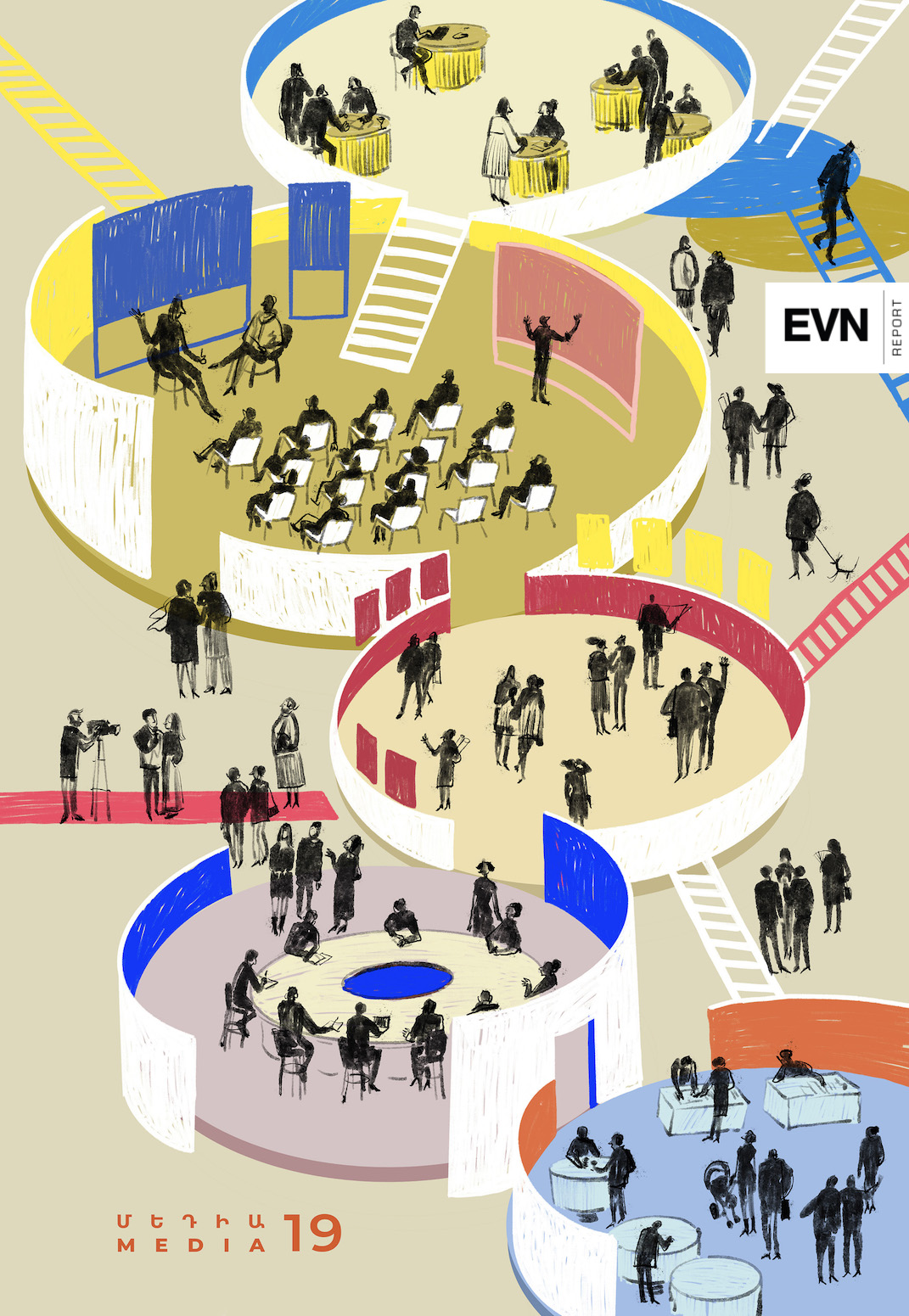
First Name *
Last Name *
Email Address *
Sign me up for the newsletter! Please leave this field empty.
EVN Report’s mission is to empower Armenia, inspire the diaspora and inform the world through sound, credible and fact-based reporting and commentary. Our goal is to increase public trust in the media. EVN Report is the media arm of EVN News Foundation registered in the Republic of Armenia in 2017.
Quick Links
- Spotlight Artsakh
- Raw & Unfiltered
- Arts & Culture
- Creative Tech
- Law & Society
- Understanding the Region
- Readers’ Forum
- Editorial Policy & Guidelines
- Article Submissions
Follow Us On
@ 2021 EVN Report. All Rights Reserved
Բաժանորդագրվել
- EVN Security Report
Subscribe to our Newsletter

SUPPORT INDEPENDANT JOURNALISM
Your trusted source
- Republic of Artsakh 28
- Daily press
- IT Industry in Armenia
- In the world
- Topic of the day
- Miscellaneous
- Media review
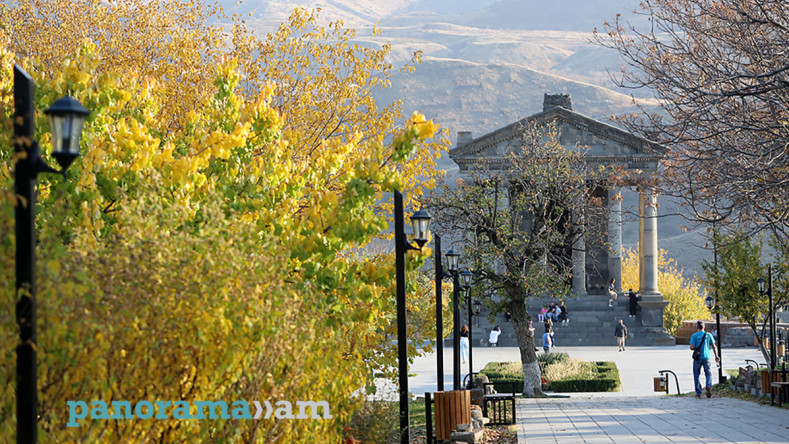
Armenia sees tourism boom with over 2 million visitors
The number of Armenia’s inbound tourists has surpassed 2 million for the firm time. The country welcomed 2 million 50 thousand tourists in January-October 2023 against 1.7 million tourists in the same period of 2022.
President of the Armenian Tourism Federation Mekhak Apresyan tells Panorama.am given that one tourist spends an average of $1,000 per visit, Armenia's inbound tourism revenues in January-October amounted to around $2 billion.
"Of course, this is unofficial data," he said.
In response to Panorama's request to provide data on Armenia’s tourism revenues for the first ten months of 2022 and 2023, the Tourism Committee says it will be available only in January, after the data is summarized.
"Nevertheless, the fact is that about $2 billion in revenues have been generated. Considering all this, we are asking the government to allocate at least 1% of the inbound tourism revenues to the tourism reforms program in 2024. The program is about marketing activities, tourism bottom line, diversification, human resources development activities, infrastructure development and others. In fact, it is extremely important for both the public and private sectors to be involved in the development of this program," Apresyan noted.
He highlighted that due to the coronavirus pandemic and the 44-day war in 2020, Armenia experienced setbacks to its tourism industry, However, the sector is gradually reviving. Moreover, 2 million tourists have arrived in Armenia for the first time.
"Last year about 1.6 million tourists visited Armenia, and now, when the year has not yet ended, we already have such a flow of tourists. It is noteworthy that this figure is also higher than in 2019 when the inbound tourists numbered 1,894,000," Apresyan added.
Russia continues to be the leader in the number of tourists coming to Armenia, followed by Georgia and Iran.
According to Mekhak Apresyan, the number of tourists wishing to spend the New Year holidays in Armenia increased over the past 10 years.
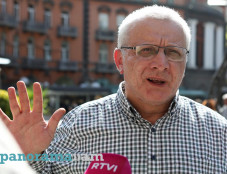
Artur Vanetsyan: I think you'll see me more often at various events in future

Follow us and get updates!
Panorama.am

- 88 Aram Str., Yerevan, Armenia
© 2005 - 2024 Panorama.am Բոլոր իրավունքները պաշտպանված են: Նյութերի օգտագործումն առանց հղման արգելվում է: Հրապարակման հեղինակի կարծիքը ոչ միշտ կարող է համընկնել խմբագրության կարծիքի հետ: Գովազդների բովանդակության պատասխանատվությունը գովազդատուներինն է:
Most popular articles
Sustainable Development of the Tourism Sector of the Republic of Armenia in the Context of an Innovative Economy
- First Online: 08 December 2023
Cite this chapter

- Tatul M. Mkrtchyan ORCID: orcid.org/0000-0003-2057-8590 3 ,
- Gayane R. Tovmasyan ORCID: orcid.org/0000-0002-4131-6322 3 &
- Svetlana A. Dallakyan ORCID: orcid.org/0000-0002-1391-8887 4
Part of the book series: Springer Climate ((SPCL))
102 Accesses
Sustainable development of the economy is very important in the fast-changing world. Tourism is a major sector of the world economy that requires sustainable development policies and strategies to overcome the negative aspects of tourism in economic, social, cultural, and environmental sectors. Innovations enter the economy with the global emergence of IT technologies. Innovative economies provide competitiveness and high rates of development. Innovative solutions in tourism will help solve sustainability issues. The main goal of this research is to examine the problems of sustainable tourism development in Armenia in the context of an innovative economy. The authors use many research methods, including analysis, synthesis, statistical methods, and correlation analysis. The authors discussed the current state of tourism in Armenia, the innovative economy, and tourism development opportunities in the context of an innovative economy. As a result of the analysis, the authors proposed a new tool for evaluating the accomplishment of sustainable tourism development aims, which provides the opportunity to measure the use of innovative sustainable solutions in different sectors. The results may be used by state and local government bodies and the private sector for evaluating sustainable tourism development in the innovative economy and taking measures toward raising tourism competitiveness using innovations.
- Sustainable development
- Innovative economy
- Republic of Armenia
This is a preview of subscription content, log in via an institution to check access.
Access this chapter
- Available as PDF
- Read on any device
- Instant download
- Own it forever
- Available as EPUB and PDF
- Durable hardcover edition
- Dispatched in 3 to 5 business days
- Free shipping worldwide - see info
Tax calculation will be finalised at checkout
Purchases are for personal use only
Institutional subscriptions
Boer H, During WE (2001) Innovation, what innovation? A comparison between product, process and organisational innovation. Int J Technol Manag 22(1–3):83–107. https://doi.org/10.1504/IJTM.2001.002956
Article Google Scholar
Butler RW (2007) Sustainable tourism: a state-of-the-art review. Tour Geogr 1(1):7–25. https://doi.org/10.1080/14616689908721291
Cronin L (1990) A strategy for tourism and sustainable developments. World Leis Recreat 32(3):12–18. https://doi.org/10.1080/10261133.1990.10559117
Dallakyan S (2022) Innovative economy of the Republic of Armenia: prospects, opportunities, trends. Institute of Economics after M. Kotanyan of the NAS RA, Yerevan
Google Scholar
Drucker PF (1985) Innovation and entrepreneurship: practice and principles. Heinemann, London
Eccles G (1995) Marketing, sustainable development and international tourism. Int J Contemp Hosp Manag 7(7):20–26. https://doi.org/10.1108/09596119510101895
Fischer MM (2001) Innovation, knowledge creation and systems of innovation. Ann Reg Sci 35:199–216. https://doi.org/10.1007/s001680000034
Fossati A, Panella G (2000) Tourism and sustainable economic development. Springer, New York. https://doi.org/10.1007/978-1-4615-4321-3
Book Google Scholar
Hellström T (2007) Dimensions of environmentally sustainable innovation: the structure of eco-innovation concepts. Sustain Dev 15(3):148–159. https://doi.org/10.1002/sd.309
Iritani DR, Lopes Silva DA, Saavedra YMB, Grael PFF, Ometto AR (2015) Sustainable strategies analysis through life cycle assessment: a case study in a furniture industry. J Clean Prod 96:308–318. https://doi.org/10.1016/j.jclepro.2014.05.029
Kimberly JR (1981) Managerial innovation. In: Nystrom PC, Starbuck WA (eds) Handbook of organizational design. Oxford University Press, Oxford, pp 84–104
Landorf C (2009) Managing for sustainable tourism: a review of six cultural World Heritage Sites. J Sustain Tour 17(1):53–70. https://doi.org/10.1080/09669580802159719
Marcon A, de Medeiros JF, Ribeiro JLD (2017) Innovation and environmentally sustainable economy: identifying the best practices developed by multinationals in Brazil. J Clean Prod 160(2):83–97. https://doi.org/10.1016/j.jclepro.2017.02.101
Mondal S, Samaddar K (2021) Responsible tourism towards sustainable development: literature review and research agenda. Asia Pac Bus Rev 27(2):229–266. https://doi.org/10.1080/13602381.2021.1857963
Myers S, Marquis DG (1969) Successful industrial innovation: a study of factors underlying innovation in selected firms. National Science Foundation, NSF, Washington, DC
Nash D, Butler R (1990) Towards sustainable tourism. Tour Manag 11(3):263–264. https://doi.org/10.1016/0261-5177(90)90051-A
Navarro J-LA, Martínez MEA, Jiménez J-AM (2020) An approach to measuring sustainable tourism at the local level in Europe. Curr Issue Tour 23(4):423–437. https://doi.org/10.1080/13683500.2019.1579174
Niinimäki K, Hassi L (2011) Emerging design strategies in sustainable production and consumption of textiles and clothing. J Clean Prod 19(16):1876–1883. https://doi.org/10.1016/j.jclepro.2011.04.020
Porter ME, van der Linde C (1995) Toward a new conception of the environment-competitiveness relationship. J Econ Perspect 9(4):97–118. https://doi.org/10.1257/jep.9.4.97
Postma A, Cavagnaro E, Spruyt E (2017) Sustainable tourism 2040. J Tour Futur 3(1):13–22. https://doi.org/10.1108/JTF-10-2015-0046
Rowley J, Baregheh A, Sambrook S (2011) Towards an innovation-type mapping tool. Manag Decis 49(1):73–86. https://doi.org/10.1108/00251741111094446
Schwab К (2018) The global competitiveness report 2018 . Retrieved from http://www3.weforum.org/docs/GCR2018/05FullReport/TheGlobalCompetitivenessReport2018.pdf . Accessed 20 Feb 2023
Schwab К (2019) The global competitiveness report 2019. Retrieved from https://www3.weforum.org/docs/WEF_TheGlobalCompetitivenessReport2019.pdf . Accessed 20 Feb 2023
Sharpley R (2021) On the need for sustainable tourism consumption. Tour Stud 21(1):96–107. https://doi.org/10.1177/1468797620986087
Shumpeter JA (1934, 1980) The theory of economic development . Oxford University Press, London
Statistical Committee of the Republic of Armenia (2019) The socio-economic situation in the Republic of Armenia in 2019 January–December. Retrieved from https://www.armstat.am/file/article/sv_12_19a_421.pdf . Accessed 20 Feb 2023
Statistical Committee of the Republic of Armenia (2022) The socio-economic situation in the Republic of Armenia in 2022 January. Retrieved from https://armstat.am/file/article/sv_12_22a_421.pdf . Accessed 20 Feb 2023
Tovmasyan G (2019) Assessing some indicators of tourism sustainability: case study from Armenia. Soc Econ Chall 3(1):127–136. https://doi.org/10.21272/sec.3(1).127-136.2019
Tovmasyan G (2021) Capital investments, tourist tax and tourism development: the case study of Armenia. Econ Sociol 14(1):199–213. https://doi.org/10.14254/2071-789X.2021/14-1/13
Tovmasyan G (2022) Evaluating the role of tourism in the economic development of the Republic of Armenia and other member states of the Eurasian Economic Union. J Lib Int Aff 8(3):83–98. Retrieved from https://e-jlia.com/index.php/jlia/article/view/747 . Accessed 20 Feb 2023
UN (1987) Our common future: report of the World Commission on Environment and Development. Oxford University Press. https://sustainabledevelopment.un.org/content/documents/5987our-common-future.pdf . Accessed 20 Feb 2023
UNWTO (2013) Sustainable tourism for development guidebook. Madrid, Spain. Retrieved from https://www.e-unwto.org/doi/pdf/10.18111/9789284415496 . Accessed 20 Feb 2023
UNWTO and UNEP (2005) Making tourism more sustainable – a guide for policy makers. Retrieved from https://wedocs.unep.org/bitstream/handle/20.500.11822/8741/-Making%20Tourism%20More%20Sustainable_%20A%20Guide%20for%20Policy%20Makers-2005445.pdf?sequence=3&isAllowed=y . Accessed 20 Feb 2023
Wall G (2018) Beyond sustainable development. Tour Recreat Res 43(3):390–399. https://doi.org/10.1080/02508281.2018.1475880
World Economic Forum (2022) Travel & tourism development index 2021: rebuilding for a sustainable and resilient future [Insight Report]. WEF, Geneva. Retrieved from https://www3.weforum.org/docs/WEF_Travel_Tourism_Development_2021.pdf . Accessed 20 Feb 2023
Download references
Author information
Authors and affiliations.
Armenian State University of Economics, Yerevan, Armenia
Tatul M. Mkrtchyan & Gayane R. Tovmasyan
Institute of Economics after M. Kotanyan of NAS of the Republic of Armenia, Yerevan, Armenia
Svetlana A. Dallakyan
You can also search for this author in PubMed Google Scholar
Editor information
Editors and affiliations.
RUDN University, Moscow, Russia
Elena G. Popkova
Rights and permissions
Reprints and permissions
Copyright information
© 2023 The Author(s), under exclusive license to Springer Nature Switzerland AG
About this chapter
Mkrtchyan, T.M., Tovmasyan, G.R., Dallakyan, S.A. (2023). Sustainable Development of the Tourism Sector of the Republic of Armenia in the Context of an Innovative Economy. In: Popkova, E.G. (eds) Smart Green Innovations in Industry 4.0. Springer Climate. Springer, Cham. https://doi.org/10.1007/978-3-031-45830-9_43
Download citation
DOI : https://doi.org/10.1007/978-3-031-45830-9_43
Published : 08 December 2023
Publisher Name : Springer, Cham
Print ISBN : 978-3-031-45829-3
Online ISBN : 978-3-031-45830-9
eBook Packages : Earth and Environmental Science Earth and Environmental Science (R0)
Share this chapter
Anyone you share the following link with will be able to read this content:
Sorry, a shareable link is not currently available for this article.
Provided by the Springer Nature SharedIt content-sharing initiative
- Publish with us
Policies and ethics
- Find a journal
- Track your research

- MOSTLY FALSE
- WITHOUT VERDICT
- MOSTLY TRUE
- MANIPULATIVE

Tourism in Armenia: The numbers are growing but there is no boom
2019-ին 1,9 միլիոն տուրիստ է այցելել Հայաստանի Հանրապետություն. Տիգրան Ավինյան
Deputy Prime Minister Tigran Avinyan said in an interview with RFE/RL on February 3 that there was a significant growth in the tourism sector in 2019.
“The number of visitors has increased by about 15%. If I am not mistaken, according to very rough estimates, 1.9 million tourists visited the Republic of Armenia” Avinyan said, adding that this figure can be considered a record.
The Fact Investigation Platform decided to check the Deputy Prime Minister’s assertions, as well as study tourism statistics and its impact on the Armenian economy.
Tourism statistics in Armenia
The RA Statistical Committee runs statistics on tourism according to the methodology of the UN World Tourism Organization (WTO). According to the methodology, an international tourist is anyone who travels for leisure, medical treatment, visiting relatives, business, religious or other purposes for a period of no less than 24 hours and no more than one year in a row.
Thus, according to statistics published by the Statistical Committee on February 5, 2020, the number of tourists arriving in Armenia has increased by about 1 million 300 thousand over the ten years from 2009-2019. In 2009, about 587 thousand tourists came to Armenia, and in 2019, the number of tourists reached 1.9 million.
By the way, since 2006 there has been a steady increase in the number of tourists in Armenia. The exception was 2015, when the number of tourists in Armenia declined by 11,000 compared to 2014.
In 2016, the flow of tourists increased again. That year, 1 million 260 thousand tourists came to Armenia, about 67 thousand more than in 2015.
And in 2017, about 1.5 million tourists visited Armenia – 18.7% more than in 2016. This is the largest increase since 2006.
In 2018, the number of tourists reached 1 million 652 thousand, increasing by 11% compared to the previous year.
As for 2019, the data provided by Tigran Avinyan are correct: 1.9 million tourists came to Armenia last year, which is 14.7 percent more than in 2018.
However, considering it a record number is an exaggerated evaluation.
Countries Armenia is popular with
Armenia is most often selected as a tourist destination by citizens of Russia, Georgia and Iran. According to the Migration Service, most of the tourists who visited Armenia in 2019 (610.695) are Russian citizens.
They provided for most of the tourist arrivals to Armenia in other years as well. Next are Iranians (115.000), then Georgia (about 95.000). Last year 52.000 tourists came to Armenia from the United States.
According to the Ministry of Economy , about 31 percent of tourists arriving in Armenia are Diaspora Armenians, and 69 percent are foreigners. Nearly half of the tourists in Armenia are attracted to cultural tourism, 19% come to see the nature of Armenia, 16% come for leisure. Business, adventure and health tourism are preferred by 13 percent, and 3 percent come to Armenia for long-term tourism.
More details about foreigners arriving in Armenia are shown on the map:
Armenia – an attractive tourist destination
Armenia appeared in international indexes and pages of influential news outlets as an attractive tourist destination especially in 2019.
In 2019, Armenia improved its ranking by 10 points in the World Economic Forum’s Travel and Tourism Competitiveness Index compared to 2018. This index measures the opportunities and policies for sustainable tourism development, which in its turn contributes to the country’s competitiveness. In 2019, Armenia ranked 79th among 140 countries (in 2018 it ranked 89 th ).
According to the same index, Armenia ranks 103rd in terms of cultural and natural resources, while it ranks 30th in the price competitiveness index. Armenia, Oman, Georgia, Uganda, Poland, and other countries are competitively priced. Armenia shares its price competitiveness score with Oman, Georgia, Uganda, Poland and others. For comparison, it is worth noting that the leader in the list is the Islamic Republic of Iran, and the most “expensive” one is the United Kingdom. By the way, in the 2018 report , Armenia ranked 42nd in terms of price competitiveness. This means that Armenia has become more affordable for tourists compared to other countries, or, in contrast to other countries, inflation rates in Armenia have been lower.
Armenia ranks 40th among 140 countries in terms of safety and security. Azerbaijan ranks 38th and Finland is the safest country.
The impact of tourism on the economy
Tourism is one of the fastest growing sectors of the economy. In 2018, the sector invested $8.8 trillion in the global economy. It provided 10.4 percent of the GDP. Tourism investment in the GDP of Armenia in 2018 was 14.1%, amounting to about $ 1.8 billion.
Tourism is a priority sector of the Armenian economy, and it is no accident that the development of the sector is always highlighted by the government.
According to the Ministry of Economy’s Tourism Development Strategy 2020-2030, 12.5% of Armenia’s labor market is employed in the sector. As of 2018, about 37,000 people are permanently employed and another 137,000 are generally employed in the sector.
As of 2018, Armenia has more than 600 hotels (in 2017 the number of hotels was 556).
Within the framework of the tourism development program, the state budget will allocate 200 million AMD from the state budget in 2020, and 286.4 million AMD were allocated last year. This year, with the support of the World Bank, the country is planning to direct around 4.8 billion AMD in loans and 1.2 billion AMD in co-financing for the development of regional facilities and attracting more tourists.
For comparison, neighboring Georgia had about 5 million tourists last year, up by 6 percent compared to 2018 (about 4.7 million). And in 2017, the number of tourists visiting Georgia was 4 million.
Thus, we can state that the number of tourists visiting Armenia is increasing year by year. Considering the number registered in 2019 a record is wrong, as the number of tourists has not risen sharply, and the growth is normal compared with numbers registered in previous years.
Ani Avetisyan
Related posts
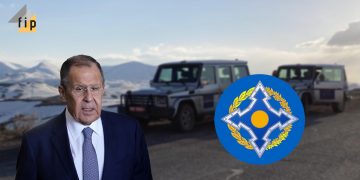

Lavrov’s false claims about CSTO’s failure to provide assistance and EU observers’ deployment period
Russian Foreign Minister Sergey Lavrov made a number of false statements in an interview with the Russian Izvestia newspaper on...
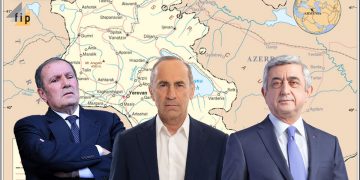
Who surrendered a section of the Goris-Kapan highway? Pashinyan claims that it was him, the Civil Contract deputy insists that it was the Russians
Gurgen Melkonyan, deputy of the Civil Contract party of the National Assembly, claimed in an interview to journalists that a...

- Methodology
- Corrections and Complaints policy
Project partners

Copyright © 2024 Union of Informed Citizens

Official websites use .gov A .gov website belongs to an official government organization in the United States.
Secure .gov websites use HTTPS A lock ( A locked padlock ) or https:// means you’ve safely connected to the .gov website. Share sensitive information only on official, secure websites.
- Search ITA Search
- Market Overview
- Market Challenges
- Market Opportunities
- Market Entry Strategy
- Agriculture
- Mining and Minerals
- Information and Telecommunication Technology
- Travel and Tourism
- Fast Moving Consumer Goods
- Trade Barriers
- Import Tariffs
- Import Requirements and Documentation
- Labeling & Marking Requirements
- U.S. Export Controls
- Temporary Entry
- Prohibited and Restricted Imports
- Customs Regulations
- Standards for Trade
- Trade Agreements
- Licensing Requirements for Professional Services
- Distribution & Sales Channels
- Selling Factors &Techniques
- Trade Financing
- Protecting Intellectual Property
- Selling to the Public Sector
- Business Travel
- Investment Climate Statement
Armenia has recorded impressive gains over the course of the past decade as its tourism industry has begun to draw visitors from a broadening set of countries and has captured a larger share of Russian seasonal travelers. From 2010 to 2020, Armenia registered an annual tourism growth rate of nearly 15 percent, making it one of world’s fastest growing tourist destinations. In 2020, due to COVID and regional hostilities, Armenia registered the fewest number of international tourists since 2005. The number of travelers increased significantly in 2021 but was still below pre-COVID levels. International tourism numbers in 2022 totaled 1.67 million visitors, in part due to large volumes of Russian travelers following the invasion of Ukraine. Armenia is expected to surpass its pre-COVID statistics in 2023. For the first half of the year, Government has reported more than one million visitors, on pace to surpass 1.9 million travelers who visited in 2019. Armenia has relied heavily on drawing visitors from the diaspora to see family and friends, and, to a lesser extent, business travelers. Over the greater part of a decade, there has been a significant increase in the number of arrivals in Armenia for holiday and leisure purposes. The government’s official tourism authority, the Tourism Committee, was established in 2016. The Tourism Committee has a policy function and has adopted a strategy for tourism promotion which highlights the different areas of tourism within Armenia including recreational, rural, spiritual, and cultural. More focused government policy interventions have helped grow Armenia’s tourism sector, and the government is keen to increase sector jobs and revenues.
According to the World Economic Forum’s 2021 Travel & Tourism Competitiveness Report, Armenia ranked 61 out of 117 countries, improving four positions over the previous 2019 report. The report gave generally good marks to Armenia in terms of most enabling environment factors for tourism in found shortcomings and room for improvement according to several other metrics, including infrastructure.
Limited international flight connections impede the development of the tourism industry, although connectivity is improving. The government’s civil aviation reforms, undertaken several years ago, haveof low-cost carriers t operate flights between Armenia and major European and Middle Eastern destinations.
Tourism patterns in Armenia tend to be highly seasonal, with the late spring, summer, and early fall months seeing strong inflows of tourists.
Leading Sub-Sectors
Armenia provides opportunities for tourism: cultural, religious, ecological, agricultural, recreational, culinary, nature, adventure, genealogical.
The country features a variety of cultural, natural, and historical sites, six UNESCO World Heritage sites, medieval monasteries, churches, and fortresses. hospitality companies in Armenia, including hotels, B&Bs, restaurants, transportation companies, tour operators, and travel agencies. Armenia’s key markets for international tourists include France, Germany, Russia, Iran, and the United States.
Yerevan serves as the main gateway to Armenia for tourists. Armenia’s capital offers a continuously evolving restaurant, café, and wine bar scene with traditional and international fare. Lodging options continue expand city has many museums, festivals, concerts, movie theaters, green spaces. culturally, historically, and religiously significant sites are located in Yerevan.
Tsaghkadzor is a ski resort town located a one-hour drive from Yerevan. It a significant number of international and domestic tourists, particularly in the winter. The town is served by a Marriott property. New ski resort projects are planned for construction in Aragatsotn and Shirak provinces. In 2023, a new mountain resort opened on the mountain slopes east of Mount Aragats, in the Aparan region of Armenia. Dilijan is another popular retreat from Yerevan, with smaller hospitality establishments. Dilijan National Park, containing dozens of recently improved hiking trails, is nearby.
Lake Sevan, one of the largest high-altitude freshwater lakes in Eurasia, is a popular summer destination for international and domestic tourists. It offers opportunities for outdoor diversions and recreation, as well as places of cultural and religious significance. Vayots Dzor province is Armenia’s wine country. The region also offers cultural and religious destinations, as well as hiking trails. Jermuk is a leading health resort noted for its mineral waters and sanatoria.
Festivals have become increasingly prominent in Armenia as well, with various events celebrating Armenian points of national pride such as wine, barbecue, and other dishes.
A number of other initiatives have taken place with the goal of restoring and preserving notable landmarks. One notable example of this is the Tatev Revival Project, a public-private partnership between the government and a private foundation that restored a major monastery complex in Armenia’s south and organized the construction of the longest reversible cableway in the world.
Opportunities
Several Armenian regions with high-quality tourist potential still lack up-to-date accommodations, restaurants, and services. International partners have focused recommendations on the need to develop hotels and guesthouses up to a sufficient standard for attracting and hosting international tourists. The government has developed investment master plans around strategic corridors. Of particular interest may be the scenic but underdeveloped southern regions of Syunik and Vayots Dzor, as well as Gyumri and Dilijan, in Armenia’s north.
International partners, including the World Bank and United Nations Development Program, have invested in supporting the development of Armenia’s tourism sector through market analyses. Various studies have examined infrastructure investment, skills development, product development, investment potential, and access to human capital as key considerations in selecting possible sites for tourism development and the creation of tourism corridors or circuits.
There are continuing opportunities for investment and commercial expansion in to support the steady increase of tourists. Well-known U.S. franchises, particularly restaurants, are in demand in and the sector is showing signs of growth. ajor U.S. hotel chains have entered Armenia or expanded their operations in the Armenian market.
Ministry of Economy Armenia Official Tourist WebsiteArmenian National Interests Fund (ANIF)Enterprise Armenia Statistical Committee of the Republic of Armenia World Travel & Tourism CouncilAmerican Chamber of Commerce in Armenia Spyur Information System
- Get involved
Artificial intelligence to help advance tourism in Armenia
Pilot project – led by Government and UNDP and funded by Russia - to help unlock business and growth opportunities across the country
March 19, 2019
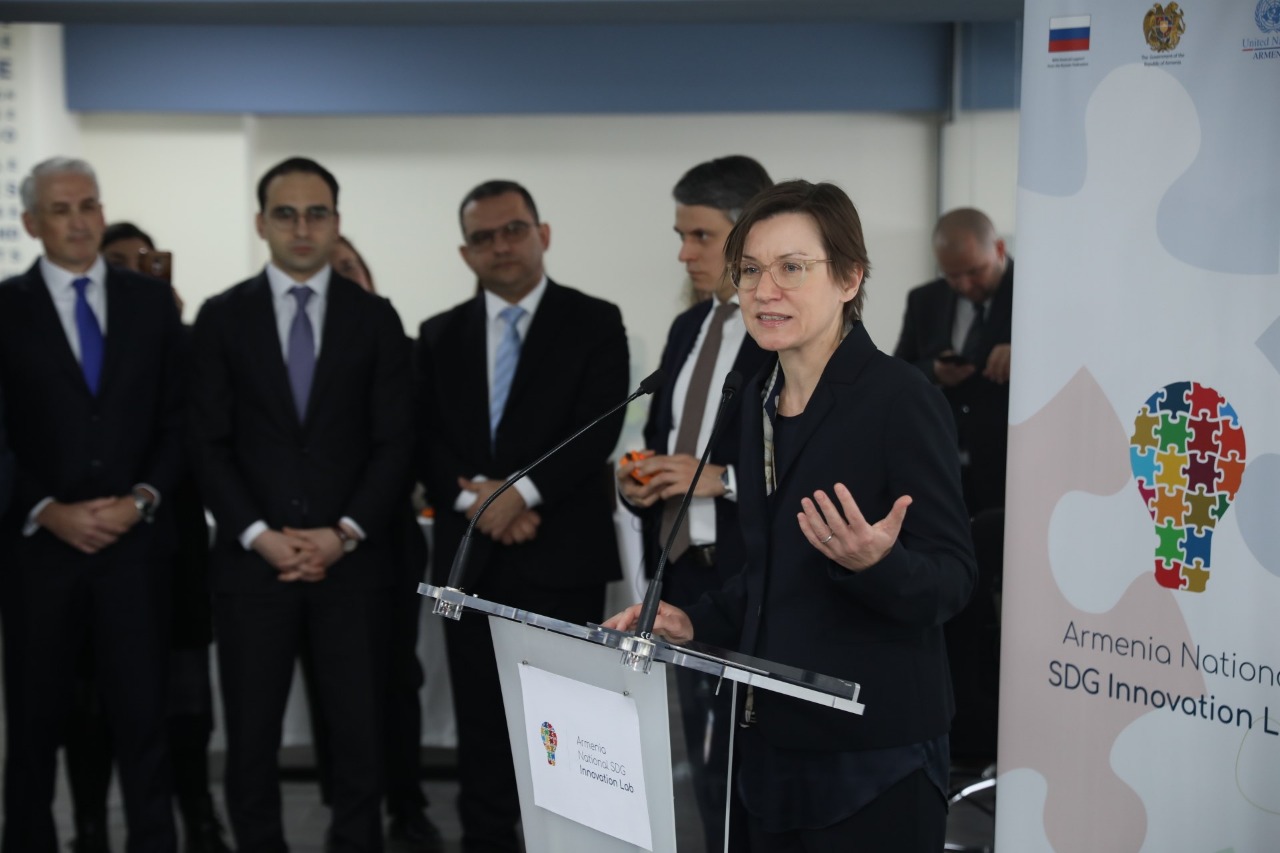
--- Image caption ---
Yerevan, 18 March 2019 – Armenia today launched Travelinsights , an artificial intelligence tool to help improve the country’s emerging tourism industry by gathering real-time perceptions of services and popular sites.
Developed by Armenia’s national Sustainable Development Goals (SDG) lab, Travelinsights uses complex algorithms to detect, collect and analyse all online reviews about Armenia’s tourism industry, helping understand its strengths and gaps through the eyes of tourists. The project used data scientists, programmers, designers and students, but also tourism industry experts.
“The tourism industry in Armenia has great potential and can provide unique opportunities for economic growth,” said Deputy Prime Minister Tigran Avinyan. Despite its long history, Armenia is a relatively new player in global tourism.
In 2017, the total contribution of travel and tourism to employment, including jobs indirectly supported, totalled 14 percent of all employment, according to the World Travel and Tourism Council. It was projected to rise in 2018 and beyond.
Last year the country boasted a 5 percent economic growth rate. The government’s 5 year-plan now aims to diversify the economy and make sure a larger number of citizens benefit. Tourism has the potential to be a strong driver for growth, jobs and shared revenue.
“This tool could help us shed light on the sources of tourist satisfaction and dissatisfaction, manage industry vulnerabilities, develop destination marketing, as well as invest in new markets and services such as ecotourism or gastrotourism,” Tigran Avinyan added.
Travelinsights will be a go-to platform for businesses - including restaurants, hotels and museums - that want to keep their finger on the pulse of the hospitality industry and improve their services.
The National SDG Lab is a joint undertaking of the government of Armenia and the United Nations Development Programme (UNDP).
Mirjana Spoljaric Egger, UNDP Assistant Administrator, Director of the UNDP RBEC, said during her first country visit to Armenia: “Travelinsights embodies the vision that UNDP has for development in the 21 st century – driven by evidence and designed for the user, with the potential to tackle complex development issues across the SDGs,” she said.
Through its global innovation portfolio , UNDP is helping to bring new approaches to the development sphere, including setting up innovation labs with governments to re-design public service delivery; embracing data innovation to implement and monitor the SDGs; exploring emerging and alternative sources of financing to deepen and diversify the resourcing and implementation of the SDGs.
Related Content
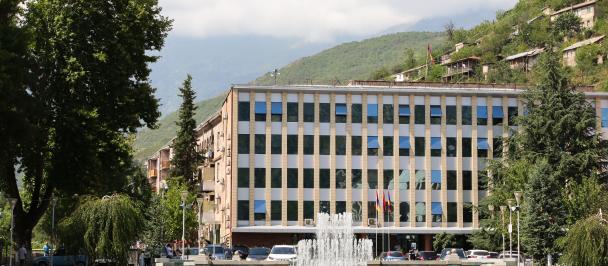
A tale of three cities
In Armenia, 3 places steeped in history - Gyumri, Kapan & Areni - are now designing mission-oriented economy strategies for their municipalities, supported by the...
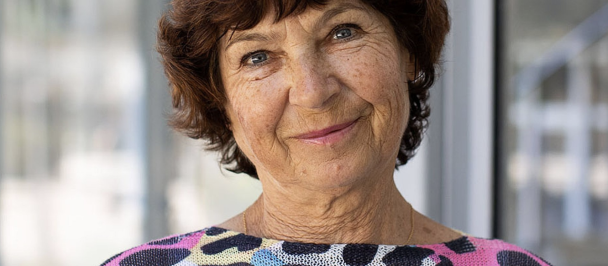
Faces of Eurasia
This year, our region of Europe and Central Asia has faced natural disasters, ongoing conflicts and environmental and economical challenges. But amidst it all, UN...
Publications
Guidance note: design your city's pathways for economic growth.
The Mayors for Economic Growth (M4EG) Facility, a joint initiative of the European Union and the United Nations Development Programme (UNDP), announced the launch...
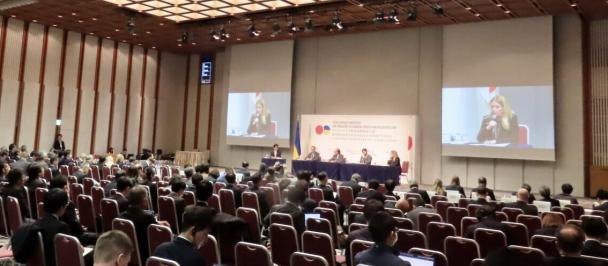
Press Releases
Head of undp for europe and central asia concludes visit to japan, reaffirms joint commitment to supporting ukraine’s recovery.
Ms. Ivana Živković, U.N. Assistant Secretary-General and Director of the United Nations Development Programme’s (UNDP) Regional Bureau for Europe and Central Asia...
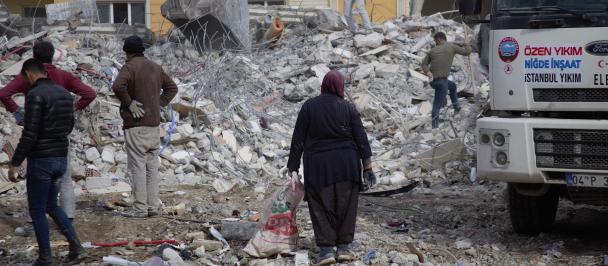
One year after Türkiye’s earthquakes, recovery takes many forms
The earthquakes in southern Türkiye on 6 February 2023 and the days that followed affected everything from the economy to the environment, from women’s rights to ...

- Bosnia Herzegovina
- North Macedonia
- Nagorno Karabakh
- North Ossetia
- South Ossetia
- Transnistria
- All the news
- Media Freedom
- Cooperation
- Feature stories
- Travel stories
- Our products
- Publications
- Occasional papers
- Philippe Schmitter Collection
- Educational Kits
- Presentations
- Correspondents
- Scientific Committee
- The results of OBCT (2018 figures)
Sustainable tourism in Armenia

Please select which newsletter(s) you wish to receive - in Italian, in English, or both - by ticking the relative box(es)
By clicking 'Subscribe', you agree that we may process your information in accordance with the privacy terms
Browse our newsletter archive
Related materials:
The political awakening of croatia's islands 27/06/2017, tests of sustainable development 29/09/2009, what future for tourism in bulgaria 23/08/2019, baška, tourism, its limits 25/05/2023, serbia: tourism with an 'eco' mission 02/11/2010.
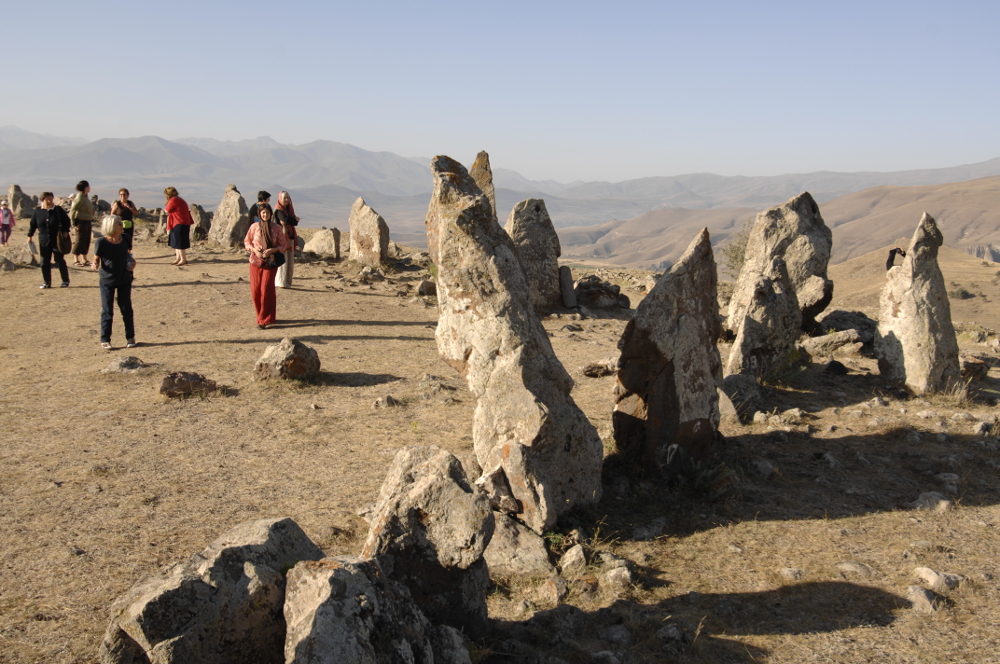
The archaeological site of Zorats Karer, near the town of Sisian
While the United Nations designated 2017 as the International Year of Sustainable Tourism for Development, Armenia is struggling to manage and make the best out of the potential of this sector
The United Nations have declared 2017 as the Year for Sustainable Tourism for Development . Five key priorities have been identified by the UN to promote sustainable development through tourism: inclusive and sustainable economic growth, employment and poverty reduction, environmental protection and climate change, diversity and heritage, and finally peace and security.
The inclusion of local communities in tourist processes, particularly with regard to the redistribution of economic benefits, remains a key aspects for tourism to become a trigger of sustainable growth. In fact, much of the tourism revenues are currently transferred from the country of tourist destination to tour operators who work there, thus depriving the host communities of an important source of income. Then comes the attention to the impact of tourism on the natural and socio-cultural environments, in order to ensure that it is mitigated and that it does not compromise the uniqueness of the destination in the long term. And finally: tourism as a vehicle for mutual understanding and overcoming prejudices and then as a builder of dialogue and peace.
The UN initiative is perhaps not resonating as it deserves, having so far been discussed mostly within the circle of experts. On the other hand, in Armenia it captured the interest of a part of civil society that sees in sustainable tourism a positive resource for the country.
Tourism in Armenia
Tourism is a growing sector in Armenia. Beside the regular inflow of diaspora, there is an increasing number of foreigners who visit the country. European ones are mostly Germans who enjoy sports and historical tourism. Italians tend to prefer religious tours: they visit the numerous monasteries, sometimes in combination with enogastronomic tours, which have a great potential in the Caucasus.
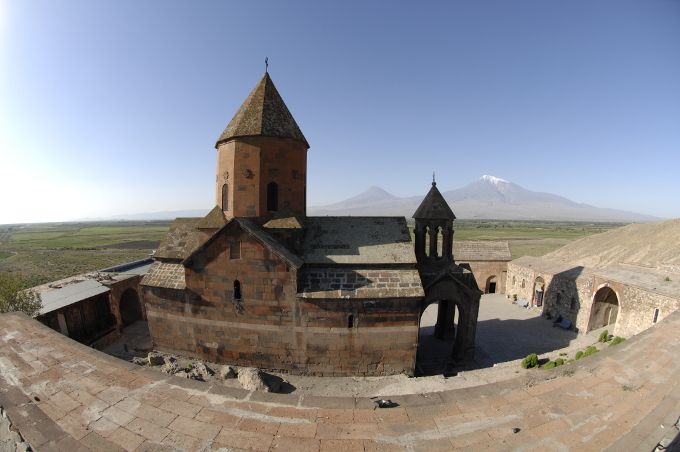
Alen Amirkhanian, Acopian Center's director
Albeit considered a strategic asset for the country, tourism in Armenia still lacks an integrated approach, a mapping and in-depth study carried out by relevant institutions. To begin with, there is no responsible Ministry for Tourism: tasks are distributed among various sub-ministerial bodies and a commission.
Before the stepping in of a new government following the elections scheduled on April 2, the outgoing executive is collecting inputs about local tourist realities. In this context, those involved in sustainable tourism seek to unite strength, to ensure this sub-sector of tourism - which has the highest relative growth on a global level - its due recognition.
With this purpose the Acopian Center is launching the second annual conference on sustainable tourism, which is due to take place on April 15 th . As explained by the director of the Center Alen Amirkhanian, the first conference aimed at familiarizing with the principles of ecotourism and sustainable tourism and to give due visibility to the activities in the country that are already inspired by these concepts: it thus gathered experiences developed in the fields of outdoor sports, agritourisms and eco-farming, sustainable religious and cultural tourism.
The same topics found their room in the Certificate Program in Tourism and Hospitality Management of the American University in Armenia , where ecotourism was included for the first time.
Sustainability and tourist reception
Sustainable tourism in Armenia is not constrained by the scarcity of possible destinations, but rather by the fragmentation and lack of cohesion between the existing realities, by limited financial resources, and by the poor popularity among the general public.
For instance, when the Monastery of Tatev was equipped with the longest funicular railway in the world the local community was invited to turn their homes into B&B, in order not to build hotels to meet the growing demand by visitors. Tatev is recognized as a UNESCO Outstanding Universal Value, and the preservation of the monastery and the environment in which it is located are Armenia's binding commitments. The local people were initially very sceptical about the proposal, unveiling a certain distance between the perceptions of local communities and of ecotourists who wish to live among locals and to contribute to poverty alleviation. A dedicated project helped to smooth the initial difficulties.
Other realities are in the loop of environmentally sustainable tourism and of eco-volunteering. A few Armenian eco-farms are members of WWOOF , the organization which gathers volunteers who want to devote their holiday to working experience in sustainable farms. Some B&B and small farms offer organic food, in a still unclear legal framework of national standards and certifications.
In the food and wine sectors, local initiatives gained the admission to Slow Food. This is the case of Motal , an age-old Armenian cheese produced by six families in line with traditional methods, using Armenian terracotta pots to mature this goat cheese. Other organic products such as apricots, nuts and other local specialities have found their place in the Ark of Taste of Slow Food . Double hat for the lavash , the traditional bread spread in the Caucasus: in its Armenian variety is recognized as Slow Food product and it is protected by UNESCO.
Outdoor Sports
The same picture is repeated in the outdoor sector: advanced professional and very mature business and associations are complemented by initiatives that are struggling to find the necessary support. In the field of mountaineering and extreme sports Armenia's mountains have much to offer: climbing, hiking, canyoning, slacklining, caving. While for the latter plausible restrictions are applied (most of the caves are not accessible not to disturb the endemic species of bats), other disciplines are exercised, but the culture of mountaineering is not widespread among the population in general.
Nevertheless the tourism offer is potentially very high, both for the peculiarities of the territory, and for the experience of local mountaineers, among whom ethical and sustainability culture are spread. To quote an example, a consortium has been created by various associations for the protection of the beautiful basalt columns, a unique, precious place for climbing, as others scattered along the Caucasus mountains, yet to be discovered by many.
The same can be said about mountain biking. In addition to the bike tours already available, independent travellers as well as dedicated NGOs are contributing via GPS to the mapping of trails .
NGOs play an important role in the development of the territory and its potential. Young boys and girls believe in the possibility of achieving a form of healthy, outdoor tourism, with positive repercussions on the local sports culture, and they have rolled up their sleeves to create projects ranging from the opening of a bike park to the promotion of alternative tourist routes. A strategic asset, if duly integrated in a holistic, comprehensive vision of tourism in Armenia.
Pallone Applauds U.S. and E.U. Support for Armenia, Calls for Additional Security and Humanitarian Assistance for Artsakh
Long Branch, NJ – Congressional Caucus on Armenian Issues Co-Chair Congressman Frank Pallone, Jr. (NJ-06) applauded pledges of assistance from the United States and European Union to Armenia during a multilateral meeting today between Secretary of State Antony Blinken, European Union Chief Ursula von der Leyen, and Armenian Prime Minister Nikol Pashinyan. The United States pledged $65 million in economic support, and the European Union pledged $290 million through its Resilience and Growth Plan for Armenia to enhance cooperation between Armenia, the United States, and European partners.
“I’m grateful to the Biden Administration and the European Union for taking bold, unprecedented steps to invest in Armenia. This funding will go a long way to help Armenia achieve independence and growth in its transportation, energy, and telecommunications sectors,” Pallone said . “In addition to the positive financial implications for the country, these pledges show critical support for one of the few truly democratic countries in the region. It also sends a clear message that we want to strengthen our partnership with the Armenian people and assist them as they continue to implement economic reforms moving forward.
“While each side recognized the Armenian refugees from Artsakh, we are still not doing enough to help the 100,000 people who were forced to flee their homeland because of Azerbaijan’s genocidal campaign last year. We must act to implement an internationally guaranteed right of return for these people.
“We must also address Armenia’s dire need for security assistance, including defensive materials to protect their territorial integrity against a potential Azerbaijani attack. That’s why I am currently leading an appropriations letter calling for $250 million in funding to address the humanitarian crisis and bolster Armenia’s security. The U.S. and E.U. support today is an important, historic step in the right the direction, but I will continue working with my colleagues on the Congressional Caucus on Armenian Issues to ensure Armenia receives all of the support it needs.”

- Leadership Crisis
- Editor's Pick

Cornel West, Harvard Affiliates Call for University to Divest from ‘Israeli Apartheid’ at Rally

Harvard Launches Third Sexual Misconduct Climate Survey

Divinity School Student Government Calls On Harvard to Divest from ‘Illegal Occupation of Palestine’

In Photos: Grouplove Rocks The Roadrunner

HAW-UAW Large Unit Votes to Unionize, 93% In Favor
The Real Problem With Harvard’s Tourists

At Harvard, the campus belongs as much to the tourists as it does to us students.
For many of us, it is routine to stop and give directions to lost tourists on our way to a morning section. We weave through crowds gathered at the John Harvard statue and restrain ourselves from warning a toddler not to touch the germ-infested statue’s foot. We temporarily adopt the role of photographer as we are asked to take photos of families in front of Widener steps, Massachusetts Hall, Weld Hall, or any red-brick building that looks remotely historic or significant.
As one of the top tourist destinations in Massachusetts, Harvard draws in more than eight million tourists each year. While the abundance of tourists is profitable for the Square and the University, it harms students and Cambridge residents.
A number of studies have documented that tourism can drive gentrification. It seems to be no coincidence, then, that as tourists increasingly become key clientele for local businesses, affordable shops and restaurants are closing down, only to be replaced by more expensive alternatives.
In 2018, Panera Bread was replaced by Tatte, a high-end bakery. Not long after, Crema Cafe was replaced by Bluestone Lane and Pinkberry by Pressed Juicery, where a small bottle of juice will run you $7. Similarly, upscale shops like Amorino, a gelato store, and Blue Bottle Coffee have opened, catering to well-monied clientele.
While corporations may reap the benefits of the Square’s growing tourism industry, locals and Harvard students — especially those without money to burn — are forced to bear the brunt of the challenges. The Square must serve two disparate groups: tourists ready to splurge on vacation and the students and residents who call Cambridge home. Unfortunately, it has become less hospitable to the latter.
And while we might only blame tourism for the $13 bowls at El Jefe’s Taqueria, the continuous flow of strangers through our gates poses deeper problems. While one could always choose not to eat out, we students have much less control over our safety and privacy, which are also negatively affected by Harvard’s many tourists.
Those of us who live in the Yard must worry not only about the nosy tourists that try to catch a glimpse of first-floor dorms, but also those that slip through our doors behind us. I have personally found tourists inside my entryway, either curious to get an inside look at student life or searching for a bathroom.
Crime is not unheard of on campus. In 2o22 alone, the Harvard University Police Department reported 34 cases of burglary. Just this month, Yard Operations notified residents of Hollis Hall and Stoughton Hall’s first floor — all freshmen — that they would be “retrofitting the windows with grates for security reasons.”
This lack of security and privacy is no doubt exacerbated by the millions of tourists walking our grounds each year. We have to question whether the benefits of Harvard’s tourism industry truly outweigh the costs.
Granted, turnstiles for dorms or a drastically heightened HUPD presence in the Yard aren’t the solution. The dorms are our homes, and while we want to feel safe, draconian security measures that make them feel the opposite of homey are not the long-term answer.
Instead, the University can increase campus safety by simply limiting the access tourists have to the Yard. For example, the College can reinstate restrictions on access to the Yard for non-Harvard affiliates at certain hours of the day.
The presence of tourists is, undeniably, an ingrained part of Harvard culture, and we should be sympathetic toward them. After all, many of us were tourists here ourselves at some point. Nevertheless, as tourism puts pressure on local affordability and threatens students’ sense of security, we need to consider whether opening Harvard’s gates to all might be doing more harm than good.
Lyat M. Melese ’27, a Crimson Editorial editor, lives in Hollis Hall.
Want to keep up with breaking news? Subscribe to our email newsletter.
Eight passengers stranded on African island after Norwegian cruise ship left without them
A dream cruise vacation has turned into a nightmare for eight passengers left stranded on the African island of São Tomé and Príncipe after their ship left without them because they were late to return from a private tour.
The tourists — six from the U.S. and two from Australia — were aboard the Norwegian Dawn, a Norwegian cruise line ship , which departed from Cape Town, South Africa, on March 20 for a 21-day voyage up the coast of Africa set to end in Barcelona, Spain, on April 10.
But on Wednesday, the group of eight tourists was late to return to the ship by more than an hour for the all-aboard time of 3 p.m. from a private excursion on the island, which was not organized by the cruise line.
Jay and Jill Campbell of South Carolina were part of the group that was left behind.
They said that their tour’s operator notified the cruise captain that they were going to be late to rejoin the ship and that the local Coast Guard tried to get them on the vessel but that they weren’t allowed to board.
As a result, the couple and the rest of the group have been stranded for days on the island off Nigeria, grappling with language, currency issues and complicated travel to catch up with the ship.
“The lovely people of São Tomé were very gracious, very hospitable. They had reached out as much as they could to help us find hotels,” Jay Campbell said on NBC's "TODAY" show Tuesday morning.
“We were able to get to a tour agency there to arrange flights to the next port of call. ... Very difficult process — you’re dealing with multiple languages, language barriers, you’re dealing with different currencies ... finding someone that even has dollars ... trying to get an agent to understand where we need to get to.
"It’s one of those ‘You can’t get there from here,’" he added.
A Norwegian spokesperson called the incident a “very unfortunate situation” and said, “Guests are responsible for ensuring they return to the ship at the published time.”
The cruise line said that after the guests failed to return, their passports were delivered to local port agents, in line with protocol. The company said it was working with local authorities to understand “the requirements and visas needed for the guests to reboard the ship at the next available port of call.”
On Monday, the guests had made arrangements to rejoin the ship in Banjul, Gambia, but the ship was unable to safely dock there because of “adverse weather conditions” and “tidal restrictions,” Norwegian said. The guests were then contacted and provided with information to rejoin the ship at Dakar, Senegal, on Tuesday.
Jill Campbell said they traveled through seven countries in 48 hours to arrive in Senegal on Monday night.
But the couple was reconsidering whether they even wanted to return to the cruise.
"We are considering whether or not we are going to board the ship. It is in dock here in Senegal," she said. "We believe there was a basic duty of care that they had forgotten about, so it does concern us."
"After what we witnessed, we truly believe that although there’s a set of rules or policies that the ship may have followed, they followed those rules too rigidly. I believe that they really forgot that they are people working in the hospitality industry and really the safety and well-being of the customers should be their first priority," she added.
Ultimately, the eight passengers did rejoin the cruise before 8:30 a.m. ET Tuesday in Dakar, Senegal, Norwegian told NBC News in an e-mail Tuesday evening, after this story originally published.
Norwegian said the passengers were responsible for making their own travel arrangements to rejoin the ship.
"Despite the series of unfortunate events outside of our control, we will be reimbursing these eight guests for their travel costs from Banjur, Gambia to Dakar, Senegal," a cruise line spokesperson said in a statement. "We remain in communication with the guests and are providing additional information as it becomes available."
A silver lining of the catastrophe was that the Campbells were able to connect with another Norwegian Dawn passenger — Julia Lenkoff, 80 — who was also left on the island, but for a medical reason.
Lenkoff was on a different day tour Wednesday. She had "medically disembarked" from the cruise to seek local treatment on that day, Norwegian said.
Norwegian said that its care team tried to call Lenkoff several times and was unable to reach her and that it worked with its port agent in São Tomé and Príncipe for updates on her health.
The Campbells met Lenkoff and were able to put her in contact with her family in California, who flew her home — a move Lenkoff's daughter said "saved her life."
"She's a world traveler. She travels all the time. So this was going to be one of her bucket list trips, because she's been to 120 countries so far, and she wanted to get to 130," her daughter, Lana Lenkoff Geis, said in an interview that aired Tuesday on "TODAY."
Norwegian said Lenkoff was escorted on a flight to Lisbon, Portugal, then put in the care of airport staff members to continue her journey back to the U.S., where she has safely returned.
Breaking News Reporter
- Election 2024
- Entertainment
- Newsletters
- Photography
- Personal Finance
- AP Investigations
- AP Buyline Personal Finance
- Press Releases
- Israel-Hamas War
- Russia-Ukraine War
- Global elections
- Asia Pacific
- Latin America
- Middle East
- Election Results
- Delegate Tracker
- AP & Elections
- March Madness
- AP Top 25 Poll
- Movie reviews
- Book reviews
- Personal finance
- Financial Markets
- Business Highlights
- Financial wellness
- Artificial Intelligence
- Social Media
Thailand has a plan to contain the monkey mayhem in the popular tourist town of Lopburi
Wildlife authorities in Thailand are planning to round up thousands of monkeys that roam the central town of Lopburi, after the animals’ aggressive behavior and attacks on residents and visitors sparked outrage and calls for their removal.
FILE - Monkeys eat fruit during monkey feast festival in Lopburi province, Thailand. Sunday, Nov. 27, 2022. Thai wildlife officials laid out a plan on Wednesday, March 3, 2024, to bring peace to a central Thai town after at least a decade of human-monkey conflict. (AP Photo/Chalida EKvitthayavechnukul, File)
- Copy Link copied
FILE - Monkeys eat fruit during a monkey feast festival in Lopburi province, Thailand. Sunday, Nov. 27, 2022. Thai wildlife officials laid out a plan on Wednesday, March 3, 2024, to bring peace to a central Thai town after at least a decade of human-monkey conflict. (AP Photo/Chalida EKvitthayavechnukul, File)
BANGKOK (AP) — Thai wildlife officials laid out a plan on Wednesday to bring peace to a central Thai city after at least a decade of human-monkey conflict.
The macaques that roam Lopburi are a symbol of local culture, and a major tourist draw. But after years of dangerous encounters with residents and visitors and several failed attempts to bring peace with population controls, local people and businesses have had enough.
The monkeys frequently try to snatch food from humans, sometimes resulting in tussles that can leave people with scratches and other injuries. But outrage grew in March when a woman dislocated her knee after a monkey pulled her off her feet in an effort to grab food, and another man was knocked off a motorcycle by a hungry monkey.
Authorities hope to round up some 2,500 urban monkeys and place them in massive enclosures, said Athapol Charoenshunsa, the director-general of the Department of National Parks, Wildlife and Plant Conservation. They’ll work with wildlife experts to find a way for a limited number of monkeys to stay at liberty in the city, he added.
“I don’t want humans to have to hurt monkeys, and I don’t want monkeys to have to hurt humans,” he told reporters during a news conference in Bangkok.
An official monkey catching campaign was launched week, prioritizing more aggressive alpha males. It has caught 37 monkeys so far, most of whom have been placed put under the care of wildlife authorities in the neighboring province of Saraburi, while others were sent to the Lopburi zoo.
Officials said they plan to capture the rest of the monkeys once the enclosures are complete, especially those in the residential areas. Separate cages will be prepared for different troops of monkeys to prevent them from fighting.
Athapol said he expects the first phase of the operation to start within weeks, and believes the huge cages will be able to contain thousands of them and “will solve the problem very quickly.”
The monkeys are a symbol of the province, about 140 kilometers (90 miles) north of Bangkok, where the ancient Three Pagodas temple celebrates an annual “Monkey Buffet” festival, and they’re commonly seen throughout the city. Macaques are classified as a protected species under Thailand’s wildlife conservation law.
Some have blamed the city’s monkey troubles on tourists and residents feeding the animals, which they say drew monkeys into the city and boosted their numbers, as well as getting them accustomed to getting food from humans.
But an earlier effort to limit feeding may have made things worse, some residents say. Local officials began threatening fines for feeding monkeys outside a few designated areas around the main tourist attractions in recent years. But those feeding areas were dominated by a few troops of the highly territorial creatures, while rival bands grew hungry and turned to harassing humans in other areas for food even more.
Athapol said people shouldn’t see monkeys as villians, saying that the authorities might have not been efficient enough in their work to control the simian population.
People also need to adapt to the city’s monkeys, said Phadej Laithong, director of the Wildlife Conservation Office, explaining that a lack of natural food sources prompts the animals to find food wherever they can, including from humans.
Previous control measure have fallen short. From 2014-2023, the wildlife authorities neutered about 2,600 Lopburi monkeys.
Athapol said they are also working in other areas of Thailand that are facing problems with monkeys, such as Prajuab Kiri Khan and Phetchaburi. He said 52 of the country’s 77 provinces report frequent problems from monkeys.
Sri Lanka's Economy Shows Signs of Stabilization, but Poverty to Remain Elevated
COLOMBO, April 2, 2024 —Sri Lanka’s economy is projected to see moderate growth of 2.2% in 2024, showing signs of stabilization, following the severe economic downturn of 2022. But, the country still faces elevated poverty levels, income inequality, and labor market concerns, says the World Bank's latest bi-annual update.
Released today, the Sri Lanka Development Update, Bridge to Recovery, highlights that Sri Lanka saw declining inflation, higher revenues on the back of the implementation of new fiscal policies, and a current account surplus for the first time in nearly five decades, buoyed by increased remittances and a rebound in tourism.
However, poverty rates continued to rise for the fourth year in a row, with an estimated 25.9% of Sri Lankans living below the poverty line in 2023. Labor force participation has also seen a decline, particularly among women and in urban areas, exacerbated by the closure of micro, small, and medium-sized enterprises (MSMEs). Households are grappling with multiple pressures from high prices, income losses, and under employment. This has led to households taking on debt to meet food requirements and maintain spending on health and education.
“Sri Lanka’s economy is on the road to recovery, but sustained efforts to mitigate the impact of the economic crisis on the poor and vulnerable are critical, alongside a continuation of the path of robust and credible structural reforms,” emphasized Faris Hadad-Zervos, World Bank Country Director for Maldives, Nepal and Sri Lanka . “This involves a two-pronged strategy: first, to maintain reforms that contribute to macroeconomic stability and second, to accelerate reforms to stimulate private investment and capital inflows, which are crucial for economic growth and poverty reduction.”
Looking forward, the report projects a modest pickup in growth of 2.5% in 2025, with a gradual increase in inflation and a small current account surplus. However, high debt service obligations are expected to exert pressure on fiscal balances. Poverty rates are anticipated to remain above 22% until 2026. Risks to the outlook remain, particularly related to inadequate debt restructuring, reversal of reforms, financial sector vulnerabilities, and the enduring impact of the crisis. The report emphasizes that strong reform implementation will be fundamental to fostering a resilient economy through continued macro-fiscal-financial stability, greater private sector investment, and addressing risks associated with state-owned enterprises.
The Sri Lanka Development Update is a companion piece to the South Asia Development Update , a twice-a-year World Bank report that examines economic developments and prospects in the South Asia region and analyzes policy challenges faced by countries. The April 2024 edition, Jobs for Resilience , projects South Asia to remain the fastest-growing region in the world, with growth projected to be 6.0% in 2024- driven mainly by robust growth in India and recoveries in Pakistan and Sri Lanka. But this strong outlook is deceptive, says the report. For most countries, growth is still below pre-pandemic levels and is reliant on public spending. At the same time, private investment growth has slowed sharply in all South Asian countries and the region is not creating enough jobs to keep pace with its rapidly increasing working-age population. The report recommends a range of policies to spur firm growth and boost employment as well as help lift growth and productivity and free up space for public investments in climate adaptation.
Source: World Bank, Poverty & Equity and Macroeconomics, Trade & Investment Global Practices. Emissions data sourced from CAIT and OECD.
Notes: e = estimate, f = forecast.
(a) Components of GDP by expenditure for 2020-2022 are estimates, as the data published on March 15, 2024, by authorities only included GDP by production.
(b) Calculations based on SAR-POV harmonization, using 2019-HIES. Actual data: 2019. Microsimulation that models sectoral GDP growth rates, inflation, remittances, employment, and cash transfers 2020-2022. Nowcast and forecast (2023-2026) use nominal GDP growth rates by sector and CPI inflation.
This site uses cookies to optimize functionality and give you the best possible experience. If you continue to navigate this website beyond this page, cookies will be placed on your browser. To learn more about cookies, click here .

COMMENTS
The tourism industry is an important contributor to Armenia's GDP. In 2019, the best year for tourism in Armenia to date, the industry comprised nearly 12 percent of Armenia's GDP. The newly appointed head of Armenia's Tourism Committee, Sisian Boghossian, is hopeful that Armenia will have recovered its tourism potential by 2024.
In Armenia tourism is recovering and in 2022 January-October the number of incoming tourism arrivals was 1400000. ... issues are connected with the qualification of the labor force, country brand strategy, T&T capital investment, ticket taxes and airport charges, air and ground trans-
Tourism in Armenia has been a key sector to the Armenian economy since the 1990s when tourist numbers exceeded half a million people visiting the country every year (mostly ethnic Armenians from the Diaspora). ... Despite internal and external problems, the number of incoming tourists has been continually increasing since 2007. 2019 saw a ...
2041 vision for Armenia's tourism sector: world class destination with unique travel experiences for target segments $1.4 $5 $11.5 bn Target annual tourism ... Committee is responsible for all issues related to developing tourism, while the tourist sites are divided among different organizations Infrastructure development
Moreover, 2 million tourists have arrived in Armenia for the first time. "Last year about 1.6 million tourists visited Armenia, and now, when the year has not yet ended, we already have such a ...
3.5 Evaluating Sustainable Tourism in Armenia. For this evaluation, the following pillars were considered: tourism assets and activity, tourism-related linkages and leakages, environmental and social sustainability, infrastructures, and attractiveness . Armenia possesses tourist resources and makes a significant contribution to the economy.
According to The World Bank data in 2020 the sector's revenues represented 2.4% of Armenian gross domestic product and about 0% of total international tourism revenues in Western Asia ( Figure 3 ...
Request PDF | On Nov 1, 2020, Gayane Tovmasyan published The problems of tourism development in the Republic of Armenia (monograph), Yerevan, Meknark LLC, 622 p. | Find, read and cite all the ...
The impact of tourism on the economy. Tourism is one of the fastest growing sectors of the economy. In 2018, the sector invested $8.8 trillion in the global economy. It provided 10.4 percent of the GDP. Tourism investment in the GDP of Armenia in 2018 was 14.1%, amounting to about $ 1.8 billion.
Armenia: South Corridor Tourism Development Strategy 8 A. Executive Summary Travel and tourism is an important key for accelerating and expanding economic development, investment and employment in Armenia with visitor numbers increasing year-on-year, growing
Republic of Armenia joined the WTO in February 2003Tourism in Armenia has grown strongly in the past five years, in terms of income and arrivals with the following indicators identified for the industry: The growth rate between 2005 and 2006 was 4.3%. The UN World Tourism Organization (UNWTO) predicts that
Overview. Armenia has recorded impressive gains over the course of the past decade as its tourism industry has begun to draw visitors from a broadening set of countries and has captured a larger share of Russian seasonal travelers. From 2010 to 2020, Armenia registered an annual tourism growth rate of nearly 15 percent, making it one of world ...
During the scientific-practical discussion titled 'Tourism Development Issues in Armenia', Apresyan said Armenia is close to the implementation of the goal on ensuring sustainable tourism development. "If we talk about the problems, it doesn't mean that we are in a bad situation. Armenia has quite serious and significant achievements.
There is also HIKEArmenia, the first and only project of its kind in Armenia to boost tourism Armenia by creating and maintaining hiking trails across the country while making them more accessible to travelers with a free app and website. In 2015, we raised almost 30,000 USD to fund the app's creation and the marking of the first 5 trails.
Yerevan, 18 March 2019 - Armenia today launched Travelinsights, an artificial intelligence tool to help improve the country's emerging tourism industry by gathering real-time perceptions of services and popular sites.. Developed by Armenia's national Sustainable Development Goals (SDG) lab, Travelinsights uses complex algorithms to detect, collect and analyse all online reviews about ...
Tourism in Armenia. Tourism is a growing sector in Armenia. Beside the regular inflow of diaspora, there is an increasing number of foreigners who visit the country. European ones are mostly Germans who enjoy sports and historical tourism. Italians tend to prefer religious tours: they visit the numerous monasteries, sometimes in combination ...
23 May, 2023 21:05. Share on Facebook Tweet this! Sisian Boghossian, head of Armenia's Tourism Committee, sits down with CivilNet to discuss the country's latest tourism figures. Boghossian also talks about strategies to increase tourism, including a new direct flight to Saudi Arabia and a domestic tourism expo set to take place in Yerevan ...
Boghossian sat down with CivilNet to break down how Armenia's tourism sector fared in 2022 and discussed what plans she and her team have for 2023. Boghossian also talked about the importance of effective social media use, the need to increase brand awareness, and other strategies the Tourism Committee is working out. Boghossian sat down with ...
Ministry of Economy's Tourism Committee has developed the 2020-2030 tourism development strategy of Armenia. The strategy envisages making the governmental policy in tourism more effective by involving also other stakeholder parties. The document defines Armenia's tourism vision, mission and possibilities for further growth by 2030.
REPUBLIC OF ARMENIA SELECTED ISSUES This Selected Issues paper on the Republic of Armenia was prepared by a staff team of the International Monetary Fund as background documentation for the periodic consultation with the member country. It is based on the information available at the time it was completed on December 3, 2021.
Here, we'll offer a few ways that Armenia shines as a destination for eco-tourists! Immerse yourself in nature. Nearly half of Armenia's landmass is mountainous. In addition to its peaks, the country has beautiful waterfalls, lakes, forests, meadows and canyons! With so much untouched nature, there are plentiful opportunities for hiking ...
Long Branch, NJ - Congressional Caucus on Armenian Issues Co-Chair Congressman Frank Pallone, Jr. (NJ-06) applauded pledges of assistance from the United States and European Union to Armenia during a multilateral meeting today between Secretary of State Antony Blinken, European Union Chief Ursula von der Leyen, and Armenian Prime Minister Nikol Pashinyan.
The Real Problem With Harvard's Tourists. By Allison G. Lee. By Lyat M. Melese, Crimson Opinion Writer. Lyat M. Melese '27, a Crimson Editorial editor, lives in Hollis Hall. 4 minutes ago. At ...
A dream cruise vacation has turned into a nightmare for eight passengers left stranded on the African island of São Tomé and Príncipe after their ship left without them because they were late ...
Updated 8:39 PM PDT, April 3, 2024. BANGKOK (AP) — Thai wildlife officials laid out a plan on Wednesday to bring peace to a central Thai city after at least a decade of human-monkey conflict. The macaques that roam Lopburi are a symbol of local culture, and a major tourist draw. But after years of dangerous encounters with residents and ...
COLOMBO, April 2, 2024 —Sri Lanka's economy is projected to see moderate growth of 2.2% in 2024, showing signs of stabilization, following the severe economic downturn of 2022. But, the country still faces elevated poverty levels, income inequality, and labor market concerns, says the World Bank's latest bi-annual update.